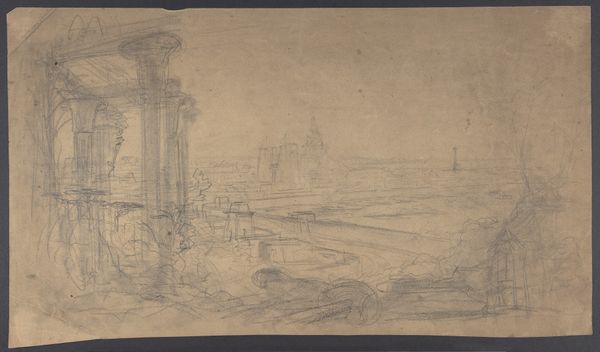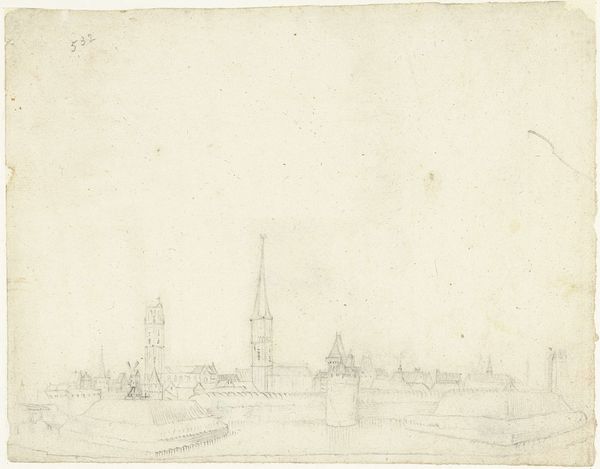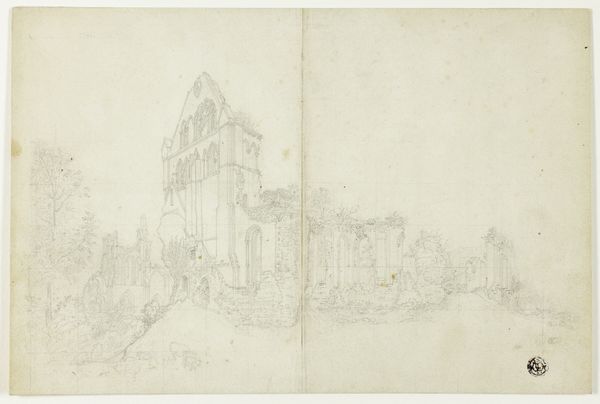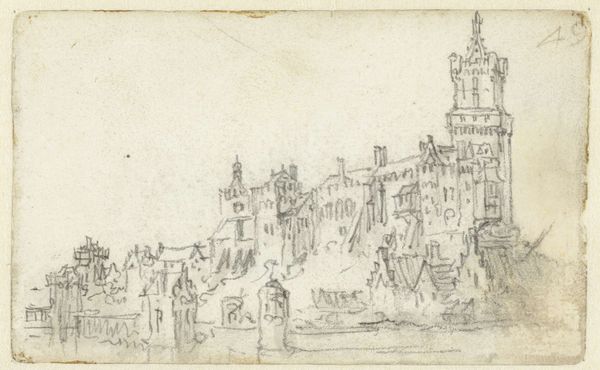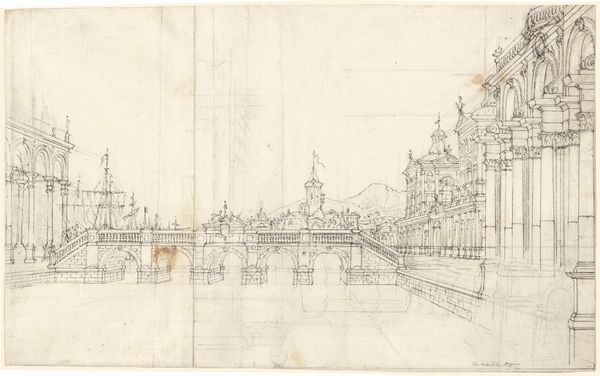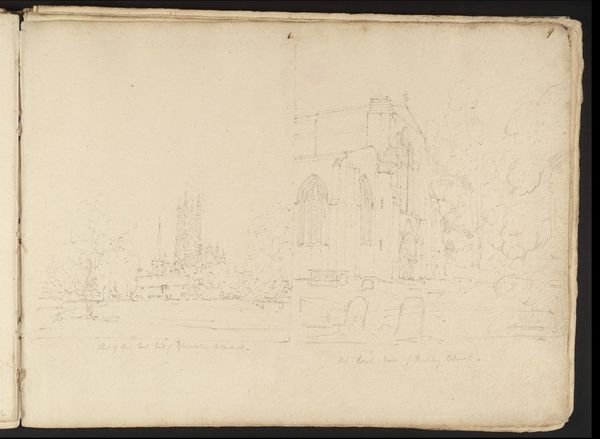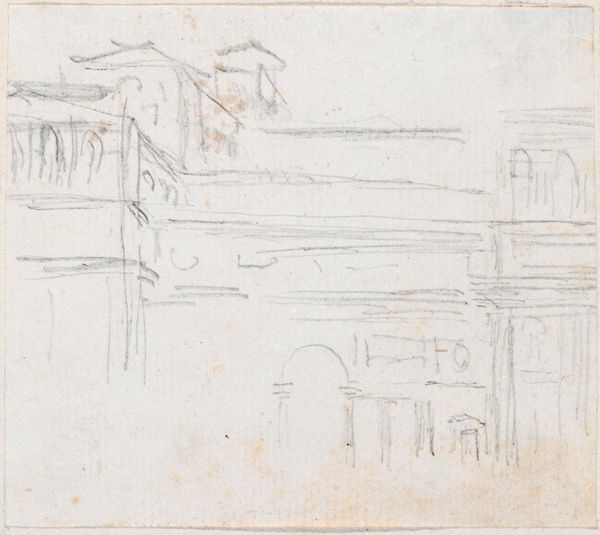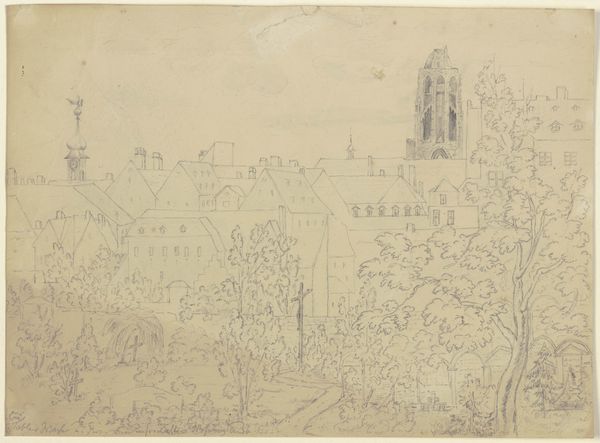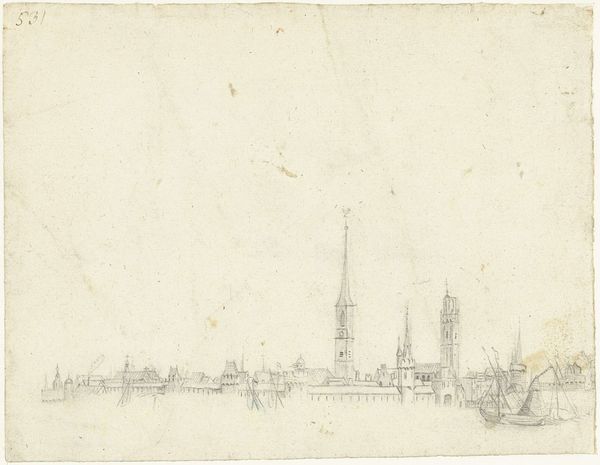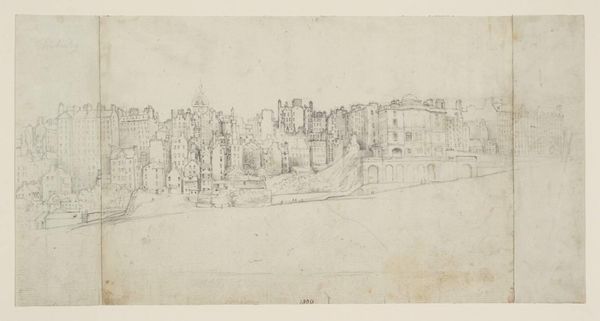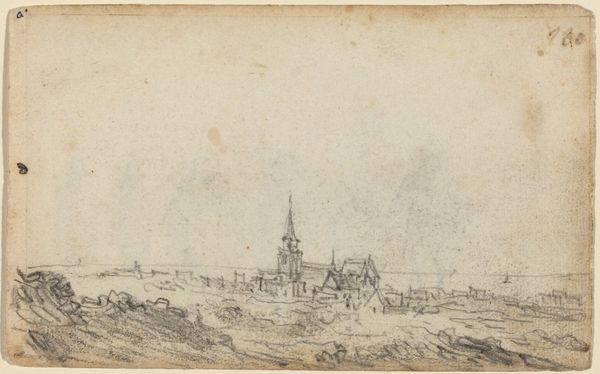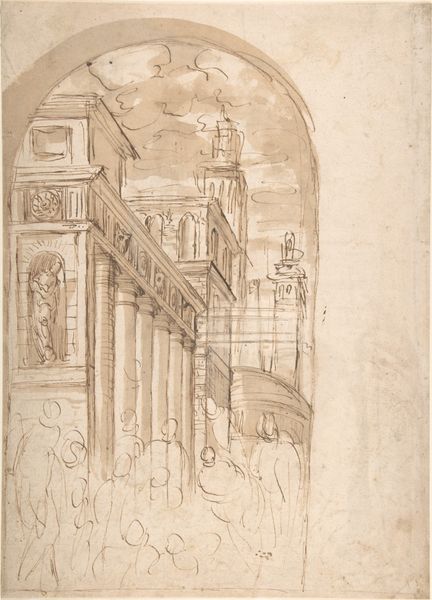
drawing, pencil
#
drawing
#
neoclacissism
#
landscape
#
etching
#
pencil
#
cityscape
#
academic-art
Dimensions: Overall (approximate): 11.1 x 11.2 cm (4 3/8 x 4 7/16 in.) support: 15.6 x 21.5 cm (6 1/8 x 8 7/16 in.)
Copyright: National Gallery of Art: CC0 1.0
Editor: This is Hubert Robert’s "Capitoline Hill," a drawing from sometime between 1754 and 1765. I’m struck by how the spareness of the pencil and paper makes the scene feel both grand and delicate at once. What stands out to you about the composition? Curator: What captures my eye is the spatial organization. The work adheres to principles evident in Neoclassical landscapes; note the measured recession into the distance, structured by the arrangement of architectural forms. How do you perceive the deployment of light within this scene? Editor: Well, the light seems almost evenly distributed, lending the buildings a rather stoic aura without any dramatic shadows. It contributes to a mood that is both calm and monumental, as though capturing the essence of enduring structures. Could the materiality of the drawing—the choice of pencil—contribute something to the reading of the work? Curator: Undoubtedly. Pencil lends itself to a linear approach. Observe how the delicate strokes delineate forms and create a sense of depth without recourse to overt chiaroscuro. Notice, too, how Robert varies the density of his lines, creating a hierarchy of visual interest and a play between structure and form. Does the medium reinforce the geometric emphasis of this composition? Editor: It absolutely does. I hadn't thought of it that way. I initially saw it as just a cityscape. Seeing how pencil, structure, and Neoclassical elements interact changes my view considerably. Curator: Indeed, and consider the lines not merely as representational but as structuring elements which underscore the enduring influence of classical architecture on artistic sensibility.
Comments
No comments
Be the first to comment and join the conversation on the ultimate creative platform.

